Tamerici Spa
Montecatini Terme
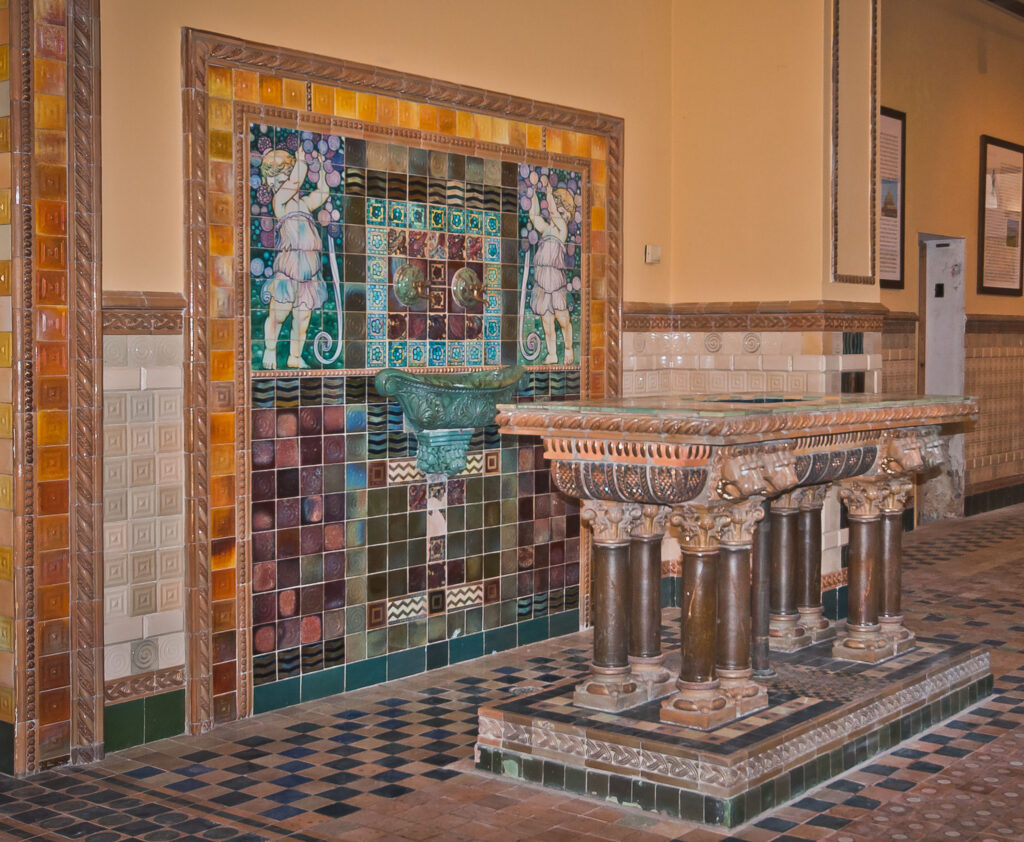
Galileo Chini was called for the decorations once again, having already left his mark in 1904 in the resort town, when he decorated the ballroom ceiling of Grand Hotel La Pace, the interiors of Palace Theatre, now lost, and the facade of the Sali Tamerici pavilion.
For the new Tamerici Chini and his Fornaci San Lorenzo factory workers will create wall murals and windows, ceramics, skylights, chimneys and polychrome and luster majolica panels all with hints of exotic taste, developing aquatic symbology in a very personal way. Worthy of note is the Salon of Mescita, where Chini reaches the maximum of his creativity: ceramic tiles of geometric design in neutral colors create a high plinth along the walls, interrupted by large majolica panels with refined figures of putti among flowers. The putti recall Chini’s paintings for the Giovane Etruria Salon at the International Exposition in Milano in 1906 and in the Salon of Dream at the Venice Biennale of 1907. At the center of each panel are two taps from which the healthy thermal water gushed out. In front of the panels with the putti are two very precious mixing counters made of glazed stoneware and supported by stylized lion protomi, reminiscent of images of Thai culture that Chini would have observed from his time in Siam.
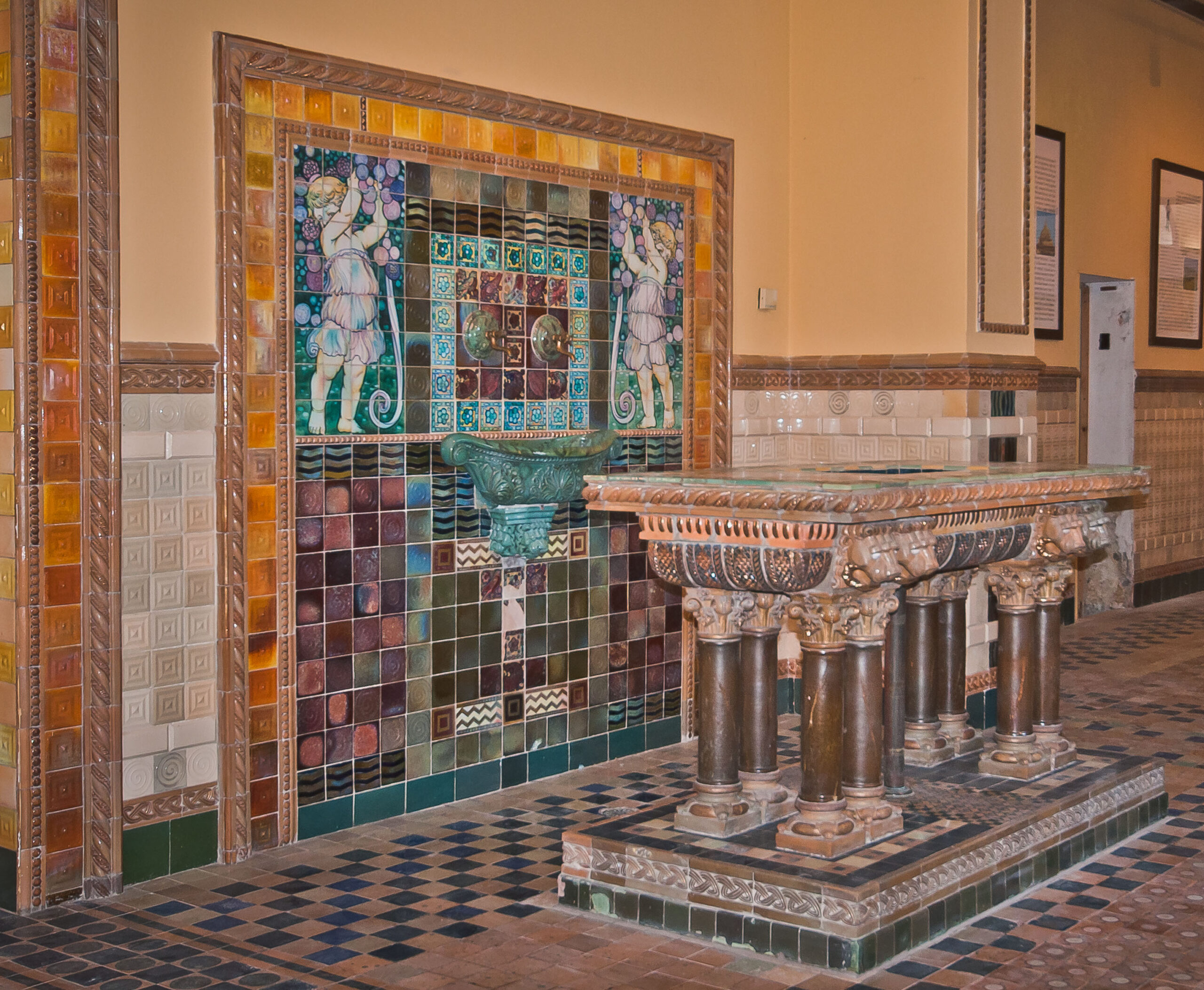
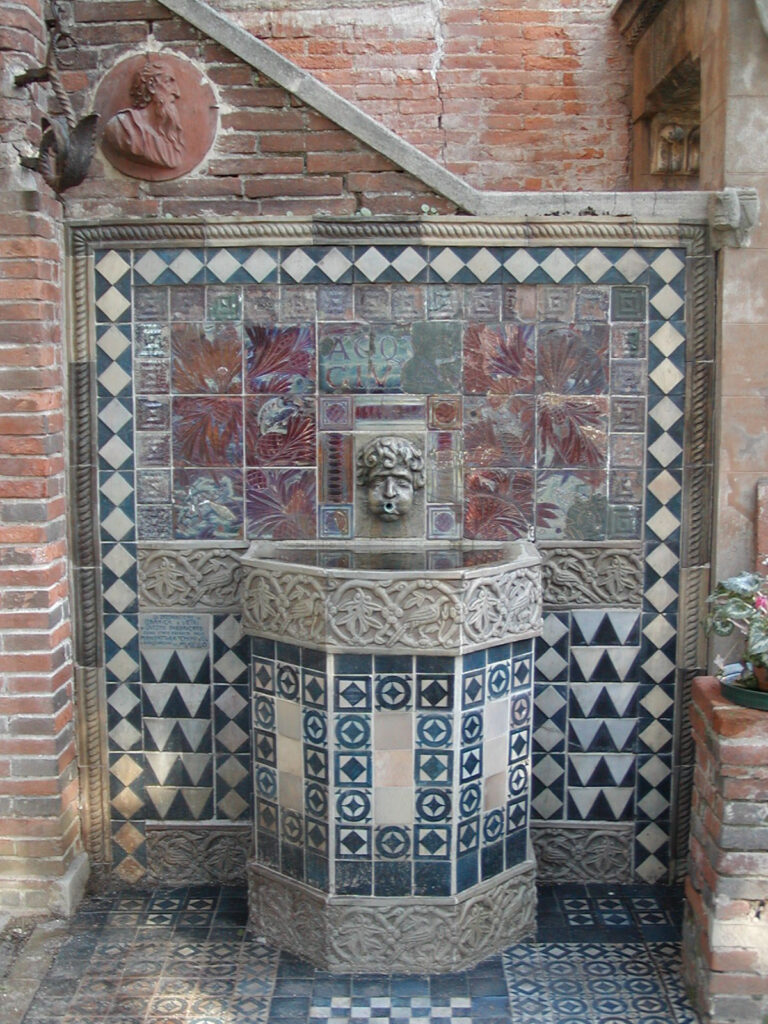
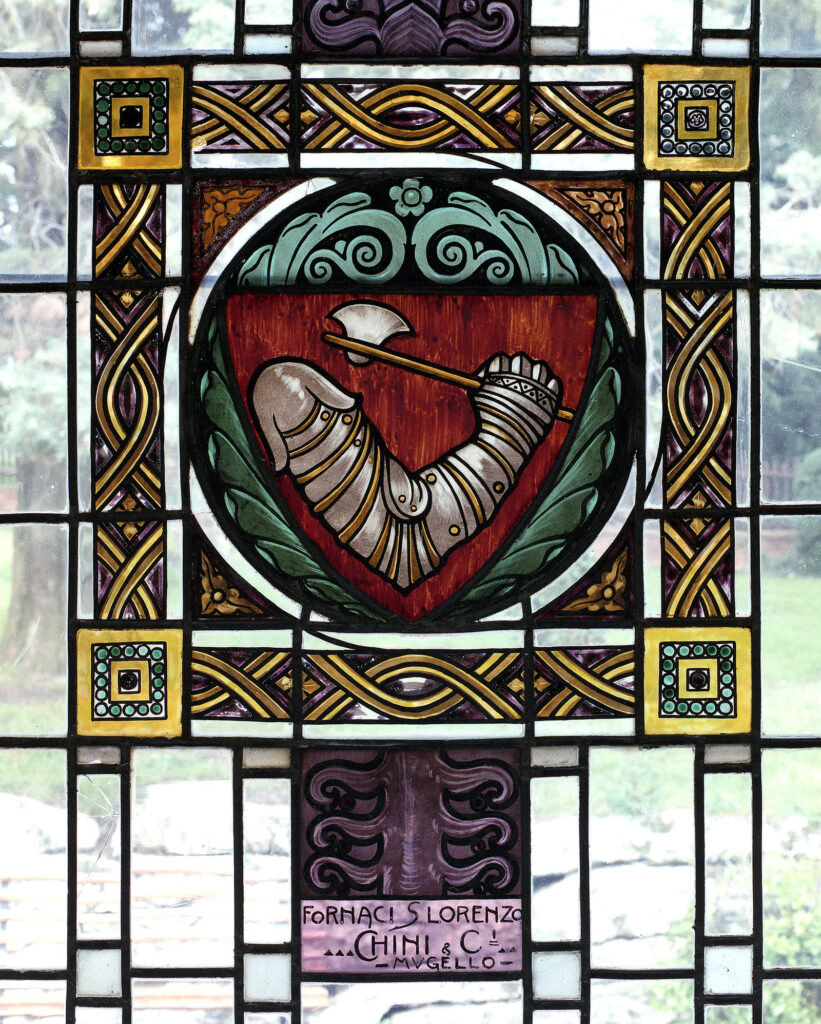
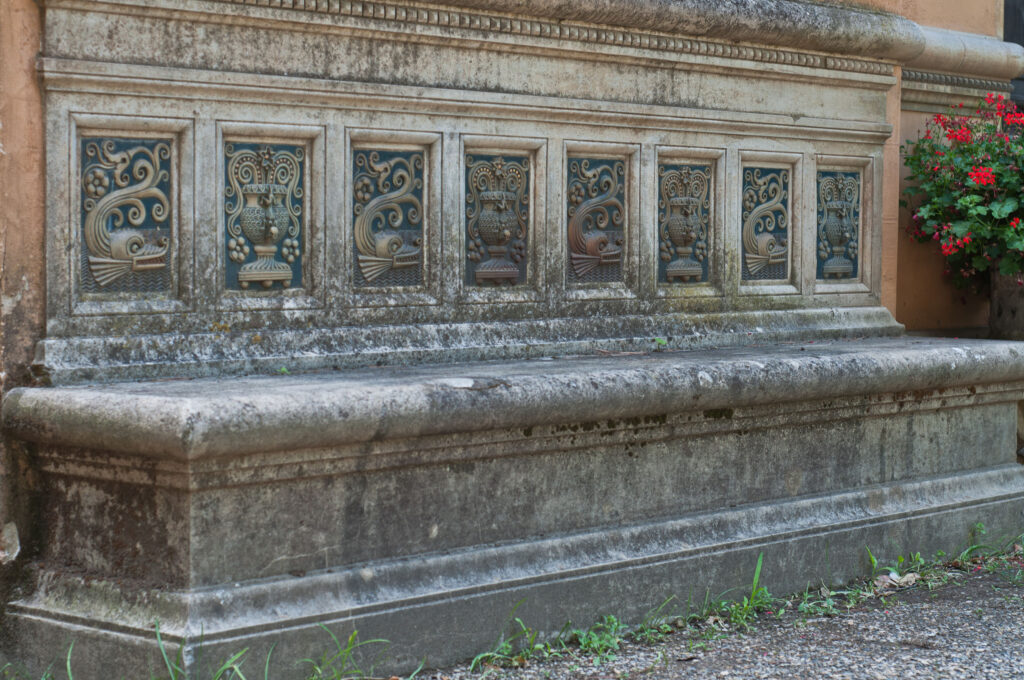
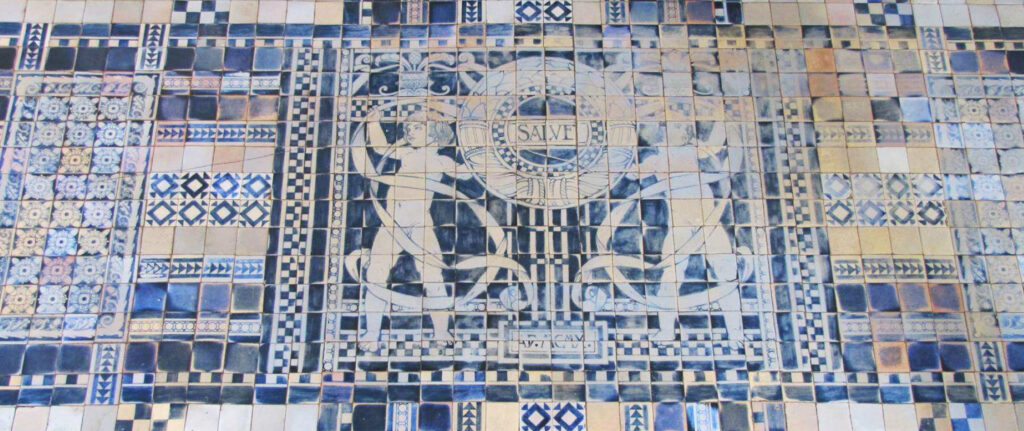
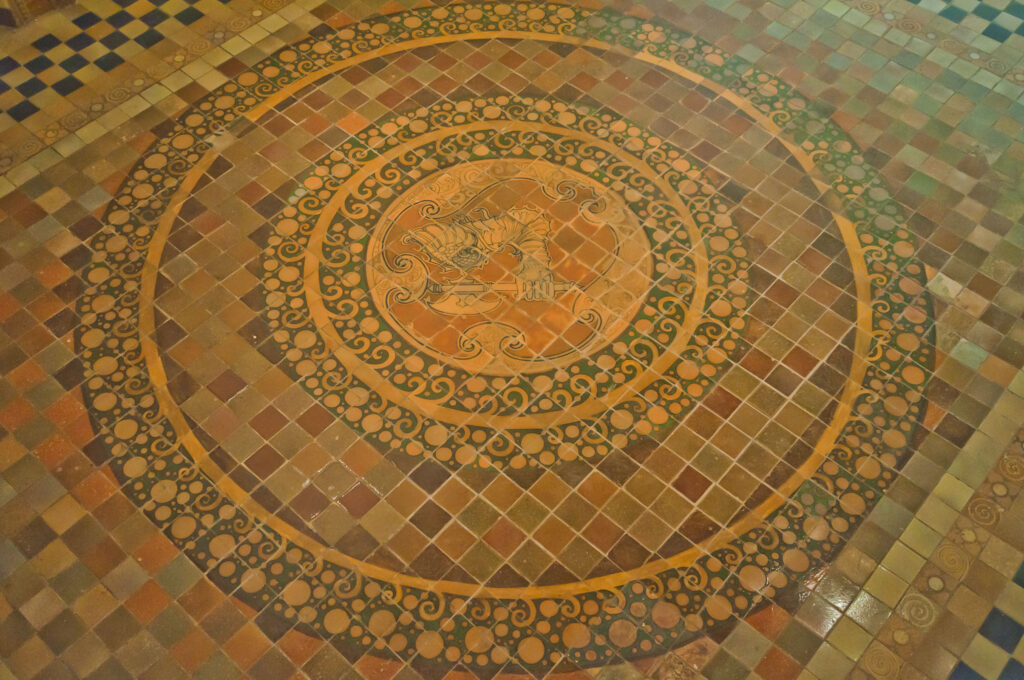
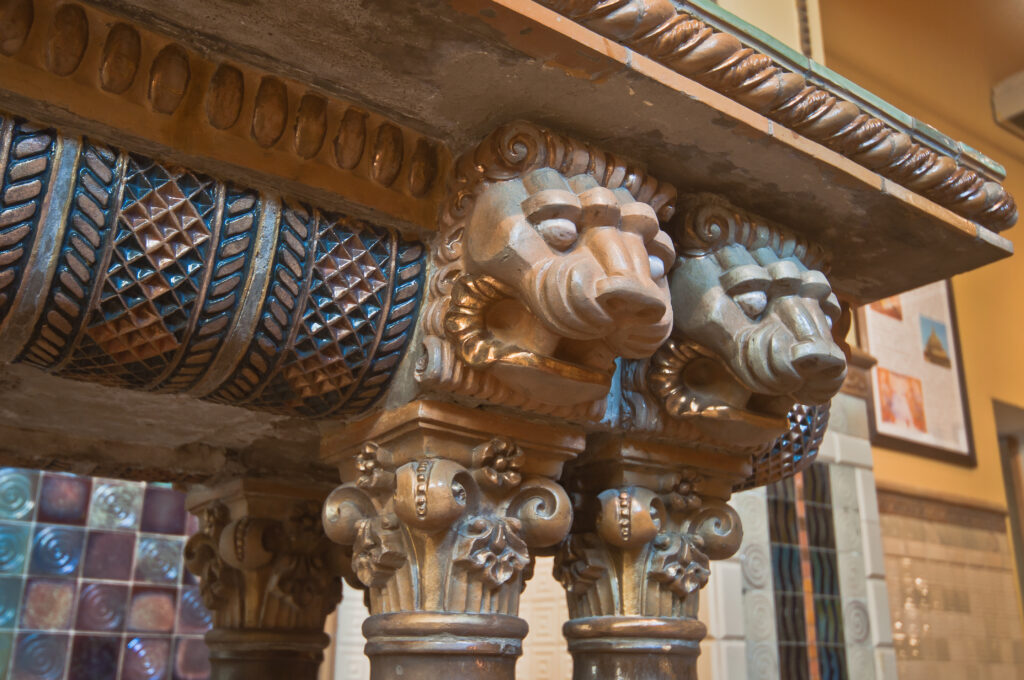
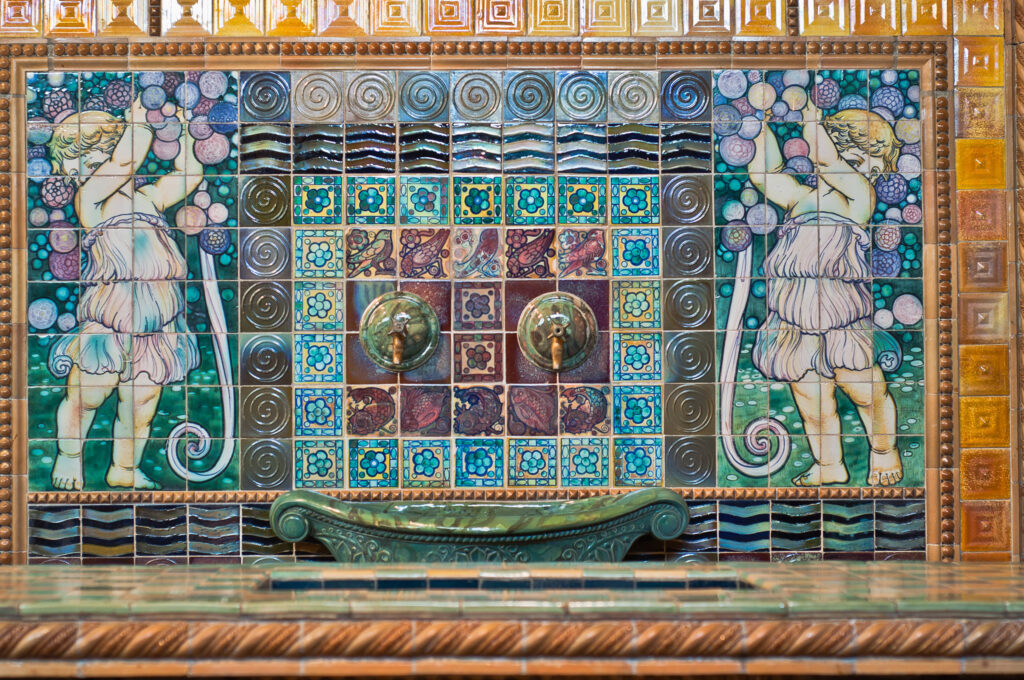

Insight
Today Terme Tamerici is no longer active for spa treatments but is free and open to the public. On hot summer days it is an ideal place to relax with a coffee and newspaper in the green garden surrounding the building.
Some of the garden furnishings found in the park have a particular origin: they come from La Capponcina Villa in Florence, where Gabriele d’Annunzio once lived; he found himself obliged to sell numerous objects after a bankruptcy. In the thirties a fountain by Mario Rutelli (1859-1941), Fontana delle Naiadi was installed, a miniature reproduction of the one the sculptor made for Piazza dell’Esedra in Rome.
Another famous fountain, decorated with a cherub and a frog and called Fontana Romanelli, is found inside the building, in a room that was once used for storage of the flasks containing the precious salt water, and now has refinements with coats of arms, embedded cartouches and a pediment painted with two proud angels holding a scroll with the date 1910.
History
The Tamerici Spa takes its name from the trees that are still found near the thermal springs found there in 1843. A Grand Ducal Rescript had granted to its owners, the Swiss Schmitz family from Livorno, the faculty to sell the prodigious water and salt, for which the Pavilion of Salts was built in 1903. The Schmitz family remained owners of the “baths” until April 1902 when the Società Nuove Terme founded by Pietro Baragiola bought the establishment. In 1906 architects Giulio Bernardini and Ugo Giusti were commissioned to renovate the establishment and in 1909 began construction, completed in 1911. The establishment is reborn in the sign of eclecticism and in a variety of architectural styles: Arab, Spanish, Renaissance, Medieval: a graceful pastiche of barbaric, Moorish and Byzantine decorations to make wealthy visitors dream.